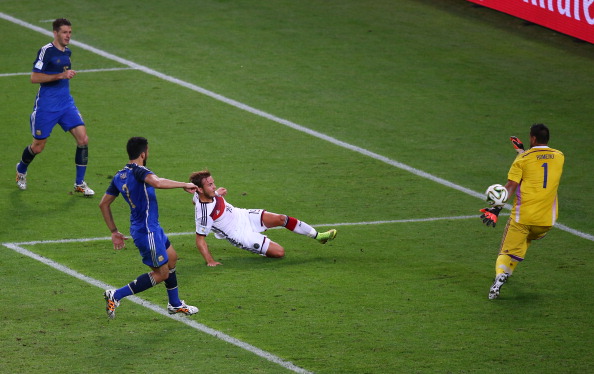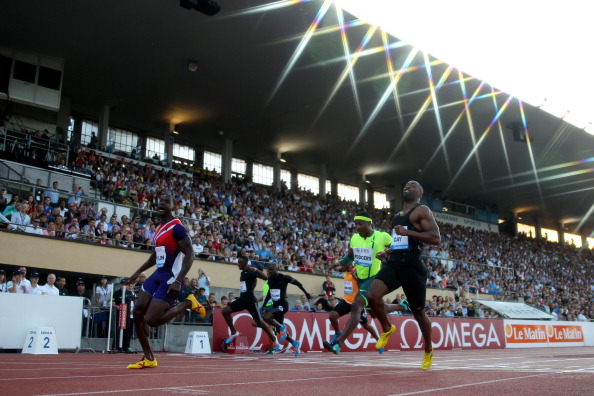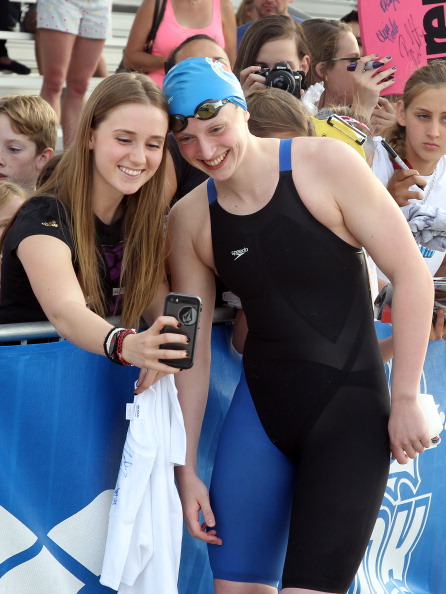EUGENE, Oregon -- When the four American cities still in the would-be race for the 2024 Summer Olympics head to Colorado Springs, Colorado, for a U.S. Olympic Committee workshop later this week, the Los Angeles bid will have a new face. Casey Wasserman, 40, one of Southern California’s leading businessmen, has over the past few weeks quietly — in keeping with his style — assumed leadership of the bid.
Wasserman’s arrival onto the public Olympic stage, in tandem with 43-year-old Mayor Eric Garcetti, is a strong signal on many levels, the emergence of a new generation of Los Angeles leadership that for 2024 could bring new energy and new thinking, one that can obviously pay homage to the power of the 1984 Games but would no longer be beholden to them.
The mayor, who is fluent in Spanish, keeps a 1984 torch in his downtown office.
At the same time, this must be emphasized: strong signals guarantee no one and no city anything.
San Francisco, Boston and Washington already had strong business leaders aligned with their bids, San Francisco with Giants president and chief executive officer Larry Baer, Boston with construction magnate John Fish, Washington with financier and philanthropist Russ Ramsey.
Moreover, it’s far from clear the USOC is even going to launch an American bid.
USOC chairman Larry Probst and chief executive Scott Blackmun have said many times they are on a holding pattern through 2014, waiting until the International Olympic Committee and president Thomas Bach complete their review and potentially far-reaching reform process, dubbed "Olympic Agenda 2020."
An all-members IOC assembly has been called for Monaco in early December. The USOC is due to make a 2024 go-or-no-go decision in early 2015. The IOC will pick a 2024 city in 2017.
The list of potential international contenders is fluid, indeed. Paris, Berlin, Doha and others routinely surface on most rumor lists.
Making matters more complicated for Los Angeles, everyone tied to the USOC process is well aware that LA played host to the 1932 and 1984 Summer Games and, moreover, that Anita DeFrantz is the senior IOC member to the United States, with offices at the LA 84 Foundation, just west of the University of Southern California, and that Jim Easton, another IOC member, has a place near UCLA. Their IOC membership makes them USOC board members as well.
Thus, the USOC has gone out of its way — as board minutes make explicitly clear — to kick DeFrantz and Easton out of the room whenever 2024 discussions come up.
Los Angeles sought the 2016 Games, losing out to Chicago, which of course ended up coming up way short in October, 2009, to Rio de Janeiro.
The USOC stayed out of the 2020 contest, which went last September to Tokyo, Probst and Blackmun intent on building relationships rather than running through another expensive bid cycle.
Recent LA Olympic strategies have been overseen by Barry Sanders, now a retired lawyer who since 2002 has been chairman of what is called the Southern California Committee for the Olympic Games.
In Los Angeles, the figurative passing of the torch, if you will, could hardly seem more symbolic: Wasserman is off Thursday to Colorado even as final preparations are being made for a party next Monday, at the stately LA 84 Foundation grounds, to celebrate the 30th anniversary of the 1984 Games. Peter Ueberroth, who ran those LA Games and then served as USOC chairman from 2004 to 2008, which included the 2005 campaign that saw New York bid, losing to London for the 2012 Games, is expected at the party.
Ueberroth, since stepping down from the USOC post, has discretely stayed out of the Olympic spotlight.
Meanwhile, in the fabric of civic life in Los Angeles, there is always a connection to be found to the Olympics and to 1984.
For Wasserman, the connections are many and layered. He has been powerfully tied his entire life to the city, business, the media, sports and the Olympic scene. Everyone in Los Angeles who mattered, it seemed, knew Casey’s grandfather, Lew, of MCA fame; one of Lew’s closest friends was Paul Ziffren, one of the big-time lawyers in town who helped bring the 1984 Games to LA; Casey is married to Paul’s granddaughter.
Casey Wasserman is chairman and chief executive of Wasserman Media Group, the company he founded 12 years ago. Its now-global practice ranges across fields as diverse as athlete management, corporate consulting, sponsorships, media rights and corporate consulting.
As just one example of the company’s got-done list: in 2011, it brokered naming rights to MetLife Stadium in New Jersey, site of the 2014 Super Bowl, in a 25-year arrangement for a reported $400 million, among the biggest stadium-rights deals in U.S. sports.
Wasserman is also president and CEO of an active private family charitable trust, the Wasserman Foundation; among other boards, he is also a trustee of the William J. Clinton Foundation.
In the Olympic sphere, relationships matter, and Wasserman’s Rolodex — to use a term that might have been more celebrated in 1984 — is formidable.
With disclosure of what was afoot in Los Angeles circulating this week among the in-the-know here in Eugene at the 2014 world juniors, speculation immediately ignited about the possibility of a track and field world championships -- 2021? 2023? -- at the Los Angeles Memorial Coliseum.
What, if anything, that might mean for Eugene's 2019 world championships bid -- it's up against Doha and Barcelona in a contest to be decided this fall -- is entirely uncertain.
Earlier this year, USA Track and Field announced LA would play host to the men's and women's U.S. marathon Trials for the 2016 U.S. Olympic team, on Feb. 13, 2016.
Of course, at this point all this is -- to reiterate -- sheer conjecture. To quote from the ballad the great Jimmy Cliff wrote in 1969: many rivers to cross.
"Casey Wasserman is one of our city's most creative and innovative business leaders, and he has built one of the world's leading sports companies here in LA because our city is the worldwide capital of the sports industry," Garcetti said. “And Casey is at the heart of thoughtful, focused philanthropy, determined to make our city even greater.
“It is only natural that Casey is my partner in leading LA's efforts to explore an American bid for the 2024 Olympic and Paralympic Games. I look forward to working closely with him."
For his part, Wasserman said, “The USOC is committed to putting forward the best of our U.S. cities, so it is a real privilege to join forces with Mayor Garcetti to steer Los Angeles’ bid for the 2024 Olympics and Paralympics. I hope our ideas, partnership and involvement can contribute to the committee’s greater mission.”






















